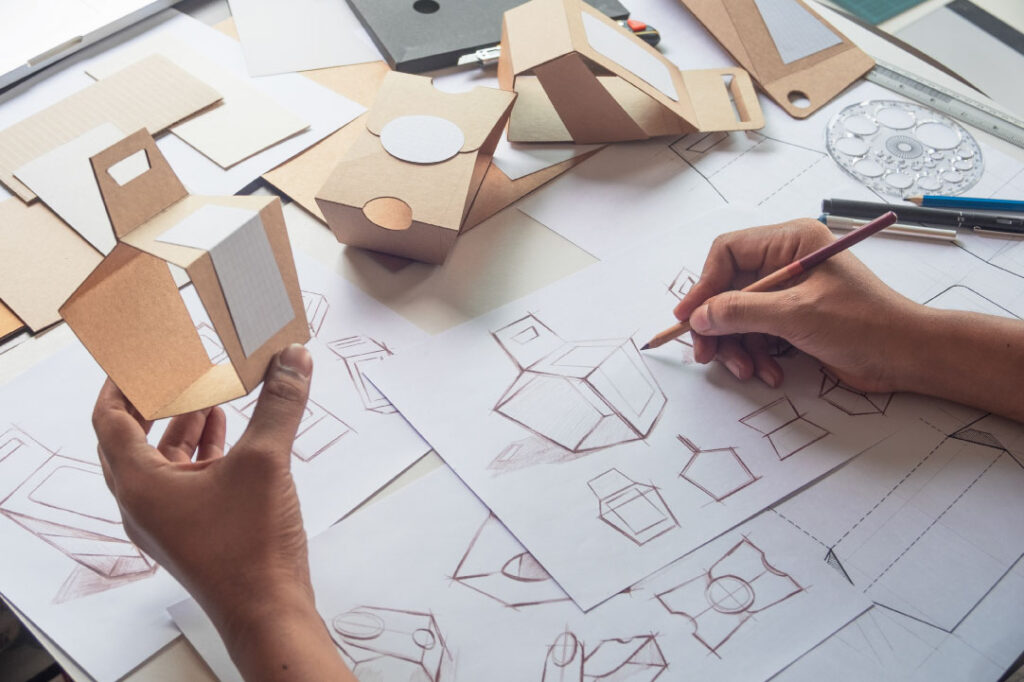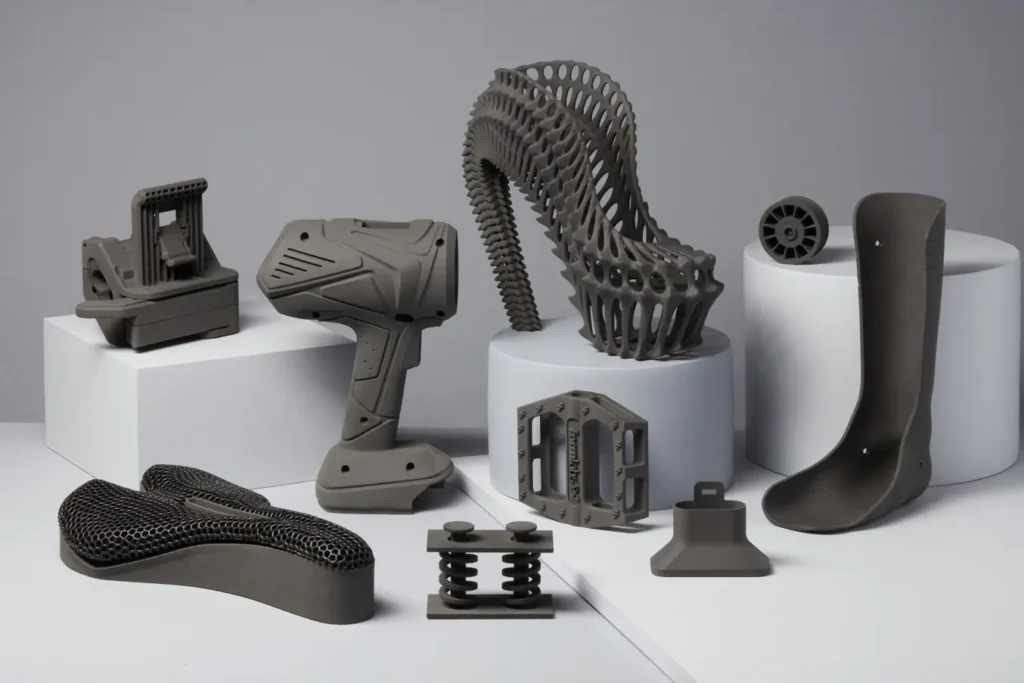
How to Turn an Idea into a Real Product: From Sketch to Manufacturing
The journey from idea to real product involves several key stages: market research to validate the concept, sketching to explore possibilities, and industrial design with 3D modeling to refine form and function. Prototyping allows testing and adjustments before full-scale production, while engineering and manufacturing preparation ensure cost-effective, high-quality outcomes.
Every great product begins with a spark of imagination. Whether it’s a new consumer gadget, a sustainable packaging solution, or an innovative piece of furniture, the path from idea to reality is both exciting and complex. For entrepreneurs, startups, and established companies alike, this journey can feel overwhelming without the right guidance. At ABYN Industrial Design and Production Studio, we specialize in turning early concepts into fully realized, market-ready products. This article walks you through each step of the product design and manufacturing process, highlighting how professional expertise can transform vision into reality.
Step 1: From Idea to Market Research
The first stage of any successful product journey is understanding the problem you want to solve. An idea alone isn’t enough—it must address a real need, fit within a market, and align with user expectations. At this stage, it’s crucial to conduct market research:
- Who are your target customers?
- What are their pain points?
- How does your product idea compare to existing solutions?
Research provides the foundation for strategic decision-making. It prevents wasted investment and ensures your design process begins with clear objectives. At ABYN Studio, we work closely with clients to validate concepts against market demand, ensuring that creativity is backed by business logic.
Step 2: Concept Development and Sketching
Once the idea is validated, the next step is concept development. This stage is where creativity takes center stage. Designers begin with sketches and quick visual explorations to translate abstract ideas into tangible directions. Sketching is a fast and cost-effective way to experiment with multiple approaches, test proportions, and visualize functionality.
Good sketches don’t just show how a product might look—they capture how it might work and feel in real-world use. At ABYN Studio, our team focuses on aligning design sketches with both user needs and brand identity, ensuring that early concepts have the potential to evolve into impactful products.
Step 3: Industrial Design and 3D Modeling
After sketches are refined, ideas transition into industrial design. This stage combines creativity with engineering precision. Designers use 3D modeling software to create detailed digital representations of the product. These models allow us to evaluate ergonomics, usability, and technical feasibility.
Industrial design is not only about aesthetics. It also considers durability, sustainability, material choices, and production methods. For example, a beautifully designed chair must also be structurally sound, comfortable, and manufacturable at scale. At ABYN Studio, we ensure that every detail—from form and finish to function—is carefully balanced.
Our design philosophy emphasizes user-centered design, which means every decision is driven by how the product will improve the user’s experience. By combining visual appeal with practical performance, we create designs that stand out in both competitive markets and the hands of real users.
Step 4: Prototyping and Testing
Once a digital model is created, the next step is prototyping. A prototype is the first physical version of your product. Prototypes can be simple mock-ups made of foam or cardboard, or advanced functional models created with 3D printing and CNC machining.
The purpose of prototyping is testing. Through hands-on evaluation, you can identify design flaws, test ergonomics, and refine materials. For example, a handheld device might look sleek in 3D renderings but feel heavy or awkward in the user’s hand. Prototyping reveals these issues early, when they are easier and cheaper to fix.
At ABYN Studio, we use rapid prototyping techniques to accelerate the design cycle. This allows our clients to test multiple iterations quickly and gather valuable user feedback before committing to mass production. Testing ensures that the final design is both user-friendly and market-ready.
Step 5: Engineering and Manufacturing Preparation
Designing a product is only half the battle. The real challenge lies in preparing it for manufacturing. This involves translating prototypes into engineering specifications, selecting the right materials, and identifying the most efficient production processes.
For example, a plastic consumer product might require injection molding, while a metal tool might be best produced with die casting or CNC machining. Each process has different costs, timelines, and design implications. At ABYN Studio, our expertise in both design and production ensures that your product is optimized for the chosen manufacturing method without compromising quality or aesthetics.
We also emphasize sustainable design and production, helping clients reduce material waste and lower their environmental footprint. By integrating sustainability into the design process, we not only create eco-friendly products but also strengthen brand reputation in a world where consumers increasingly value responsible innovation.
Step 6: Production and Quality Control
Once the design is finalized and engineering files are complete, the product enters mass production. This is the stage where consistency and quality become essential. Poorly managed production can lead to defects, delays, and financial losses.
At ABYN Studio, we collaborate with trusted manufacturers and suppliers to ensure that production runs smoothly. Our team oversees quality control at every step, from raw materials to final assembly. This guarantees that every unit meets the same high standards, delivering reliability to both clients and end-users.
Quality control is not only about catching defects—it’s about building customer trust. A well-designed product that fails in the marketplace due to poor production is a lost opportunity. By carefully monitoring the manufacturing process, we protect our clients’ investment and reputation.
Why Work with a Professional Industrial Design Studio?
Many entrepreneurs underestimate the complexity of bringing a product to market. It’s not just about having a good idea; it’s about executing that idea with precision and expertise. Partnering with a professional studio like ABYN provides several key advantages:
- End-to-end expertise: From ideation to production, we manage the entire process.
- User-centered design: We ensure products meet real user needs, not just visual trends.
- Faster time to market: With rapid prototyping and efficient workflows, we accelerate the product journey.
- Risk reduction: By validating concepts early, we save clients from costly mistakes.
- Sustainable solutions: We integrate eco-friendly practices into design and production.
Working with ABYN Studio means having a partner who understands both the creative and industrial sides of product development.
Conclusion: Turning Vision into Reality
Transforming an idea into a real product is one of the most rewarding journeys an entrepreneur or company can take. From early sketches to mass production, each stage requires creativity, precision, and collaboration. Without a clear process, many ideas remain just that—ideas. But with the right guidance, your vision can become a product that improves lives, captures markets, and strengthens your brand.
At ABYN Industrial Design and Production Studio, we are passionate about helping innovators succeed. We believe that great products are born from the perfect balance of imagination, strategy, and craftsmanship. Whether you’re a startup looking to launch your first product or an established company aiming to expand your portfolio, we’re here to bring your ideas to life.
Ready to take the next step? Contact ABYN Studio today and let’s create something extraordinary together.
